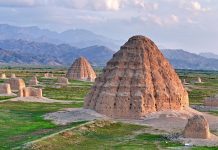BEIJING: Chinese research on ancient civilization has made remarkable progress in the past year, since President Xi Jinping called for further efforts to advance the study of Chinese civilization.
While presiding over a group study session on May 27 last year of the Political Bureau of the Communist Party of China Central Committee on a national-level, decadeslong research program that traces the origins of Chinese civilization, Xi called on academics to forge ahead and make full use of the fruits of the program, which demonstrates China’s 5,000-year history through abundant archaeological discoveries and findings. Xi, who is also general secretary of the CPC Central Committee and chairman of the Central Military Commission, emphasized that more achievements in the field can help the nation strengthen cultural confidence and stick to the path of socialism with Chinese characteristics, while exploring and explaining how a sense of community among the Chinese people was developed, and how Chinese of various ethnic groups are united in diversity. The program, involving about 400 scholars across the country, was launched in 2002 and mainly focuses on key sites, mostly between 3500 and 1500 BC.
“We have had many outcomes, but our understanding of a clear development path of civilization still needs exploration at a deeper level,” said Wang Wei, director of the Chinese Academy of Social Sciences’ Academic Division of History, who delivered a lecture during the 2022 group study. “We have to eye more areas and expand relevant comparative studies to a much wider time span to look for the roots and key ingredients of a civilization.” In the past year, Chinese researchers have lived up to Xi’s expectations and yielded new findings in the field.
Earlier this month, in Zhengzhou, Henan province, the country’s leading scholars gathered at a forum to report recent discoveries covering a long span of time.
At the 10,000-year-old Sitai site in Shangyi county, Hebei province, archaeologists unearthed ruins of six semi-basement dwellings, which are believed to be the earliest known “houses” in China. The discovery “provided crucial materials for the study of key issues, including Chinese cultural lineage, human migrations and the origins of agriculture,” said Zhao Zhanhu, a researcher at the Hebei Institute of Cultural Relics and Archaeology.
In Hanshan county, Anhui province, archaeologists recently found massive ruins of a group of buildings at the Lingjiatan site, which dates to between 5,300 and 5,800 years ago. More findings of jade artifacts and sites for major sacrificial ceremonies have enabled people to learn about a prehistoric ritual system and complicated society. –The Daily Mail-China Daily news exchange item





